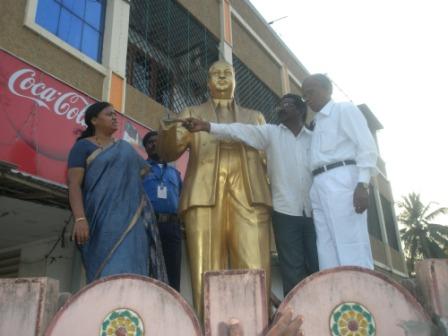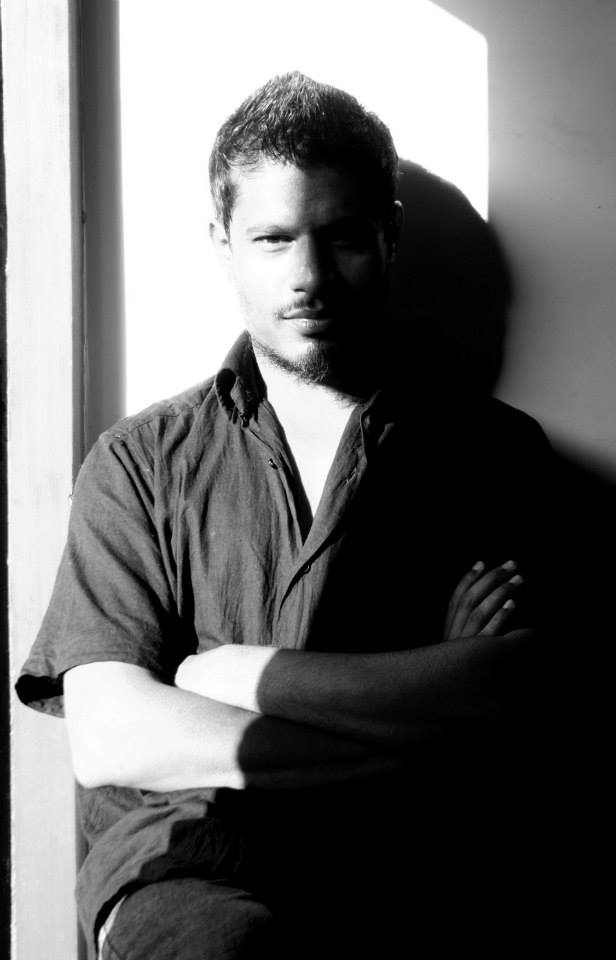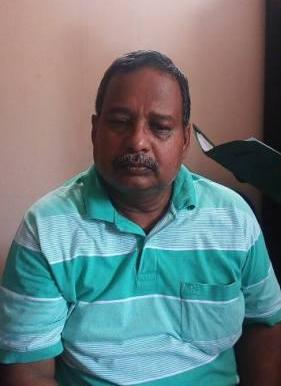Truth, they say, is the first casualty in any war. Was it a caste war which triggered the series of desecrations of Babasaheb Ambedkar’s statues in Andhra Pradesh, starting with the destruction of four statues in Amalapuram on the night of 22nd January? Was it the result of inter-group rivalry among State Congress leaders? Was it an effort to destabilize the Kiran Kumar Reddy government? Was it a clash of interests between elected Dalit and Kapu leaders in Amalapuram which provoked the destruction? Was it just a group of drunken young boys looking for excitement who damaged the statues? Was it a part of a plot conceived by some local Kapu leader with criminal antecedents?
G. Jhansi, Convener of Dalit Sthree Sakthi, who visited Amalapuram as member of a fact finding team, shares her views on what actually happened there, on the politics fuelling the continued desecrations and the vested dominant caste interests protecting the accused. What come through in this conversation are valuable insights gained from her many years of activism and struggles for Dalit rights, apart from her frank and forthright observations on what and who are inciting such despicable acts as the desecrations.

Round Table India: How many statues do you think were desecrated?
G.Jhansi: Four statues were first desecrated in Amalapuram, and then another in Dhavaleswaram. The next one was in Medchal in Ranga Reddy district. Yes, it was not confirmed, only a finger was reportedly damaged. Then there was the Jalalpur incident in Nizamabad. The last known desecration was in Siddhantam in West Godavari district, where one finger and an ear were damaged.
RT: So there were eight (statues desecrated) in all?
G.Jhansi: Yes, it seems like there were eight in all. So, on the 27th (of January) a team of us—with Bojja Tharakam of RPI and I, representing Dalit Sthree Sakthi– went on a fact finding mission to Amalapuram. We visited all four sites where desecration had happened. We found that two of the statues were totally damaged and two others had gone completely missing. They were taken away.
RT: They were smaller?
G.Jhansi: Yes, two were of bust size and others were bigger. One of the damaged statues was later recovered by the police from an open drain. So, we visited all the four sites of desecration.
RT: Were they all in Amalapuram town, or were some of them in the surrounding villages?
G.Jhansi: All of them were in villages. And it is not like those villagers were close to each other, or along a straight road. One village was in the south, another in the north, they were in different areas.
RT: So it was all planned?
G.Jhansi: Yes, it was all planned. The villages are not near each other, they are at least 2-3 kms from each other. It was not like one group of people, or a few persons could have easily done all that. The statues could not have been damaged or removed easily. Considerable force has to be used to remove or damage the statues, and it looks like considerable force was indeed applied. They had to be removed using crowbars and other tools; it couldn’t have been done otherwise.
 It couldn’t have been a large group, as people would have noticed them and some of the statues were in residential areas, with Dalits’ and non-dalits’ houses around. In one place, there was a Rajiv Gandhi statue just beside the damaged Ambedkar statue. That was very safe; nothing seems to have been done to it.
It couldn’t have been a large group, as people would have noticed them and some of the statues were in residential areas, with Dalits’ and non-dalits’ houses around. In one place, there was a Rajiv Gandhi statue just beside the damaged Ambedkar statue. That was very safe; nothing seems to have been done to it.
At another site, there was a statue of Balayogi (G.M.C. Balayogi, first Dalit Speaker of the Lok Sabha) beside the bust of Dr Ambedkar that had been totally dislodged and carried away. It also bore marks of having been hit with crowbars or other tools. They seem to have attempted to destroy that statue too, after having removed the Ambedkar statue. Perhaps they did not have time, and there were also houses, of Dalits and non-dalits, just beside that site.
Whatever might have happened, it is very clear that this couldn’t have been done by the young boys being paraded as culprits by the police. It couldn’t have been done by any drunken rowdy boys. They were strongly built statues, very heavy, so they couldn’t have been destroyed, dislodged or carried away easily. It had to be properly planned and executed with necessary tools, instruments and vehicles.
 We stayed there for around a week, organizing press meets, and there were also rallies, dharnas and other protests, including ksheerabhishekams in the region. After a week of observation and analysis, it seemed to me that the current political phenomena, politics now, including Dalit politics, even after such an inhuman, emotionally wrenching act had taken place, were not attempting to explore the issue fully, to get to the truth. No one is attempting to get to the truth. How does it help if a few try honestly, when the rest can’t see the emperor’s new clothes?
We stayed there for around a week, organizing press meets, and there were also rallies, dharnas and other protests, including ksheerabhishekams in the region. After a week of observation and analysis, it seemed to me that the current political phenomena, politics now, including Dalit politics, even after such an inhuman, emotionally wrenching act had taken place, were not attempting to explore the issue fully, to get to the truth. No one is attempting to get to the truth. How does it help if a few try honestly, when the rest can’t see the emperor’s new clothes?
On the one hand, we have to admit frankly that Dalit politics is in a pitiable state. It seems to have no direction, no leadership..
RT: But there are a lot of leaders..
G.Jhansi: What is the use of having so many leaders when they don’t respect each other? Unlike elsewhere, the Dalit community has more representatives there. Be it the Minister or the MP or the two MLAs. But the situation there (in East Godavari district) doesn’t reflect the kind of positive atmosphere one expects, the kind of awareness one would like to see. Political self-interests seem to over-ride other considerations; the situation is such, so they have to be pitied more than anything else. Perhaps it is futile to expect them to rise above the general trend of corruption, dishonesty and lumpenisation. It is wrong to expect that.
RT: What do the leaders say about what happened there?
G.Jhansi: They are not saying much, the situation does not seem to be conducive for either the police or the people’s representatives to investigate the truth. They are also divided into groups, Harsha Kumar (MP from Amalapuram reserved constituency) has a group, Vishwaroop (Minister in the Andhra Pradesh Government) has another. Jupudi (Jupudi Prabhakara Rao, MLC and president of one faction of the Mala Mahanadu, also spokesperson of YSR Congress party) also came, he has another group. In this way, they seem to be divided into groups, struggling to retain their own individual identities and interests, and are unable to work towards finding out the truth.
RT: But the people need to know what happened..
 G.Jhansi: The people need to know what happened, but efforts are not being made to uncover the truth. The system, the police or the people’s representatives need to provide answers to the people.
G.Jhansi: The people need to know what happened, but efforts are not being made to uncover the truth. The system, the police or the people’s representatives need to provide answers to the people.
RT: And they are also trying to project it as a caste war.
G.Jhansi: Yes, they’re trying to project it as a caste war, but no one knows how much of it is true. But most of the atrocities that have happened in that area were committed by the Kapus against the Dalits. As far as my knowledge goes, recalling from my experience of the last ten years, in all those cases, very little evidence is usually found against the Kapus. They commit atrocities without leaving any evidence, and avoid the law by producing false evidence or witnesses. Lots of murders have happened. The Kapus have themselves committed or arranged many murders. None of them have been convicted in a single such case until now. We ourselves have dealt with many such murders, faced arrests and still have non-bailable cases filed against us. Everyone knows what happened, the people know, but nothing seems to come out of that. I can cite a few examples from my own experience.
RT: And they still try to present Konaseema (the Godavari delta region in which Amalapuram is situated) as a very peaceful area..
G.Jhansi: Yes, that’s the picture they try to project. But conflicts between Dalits and the Kapus run as a constant undercurrent, a hidden fire always smoldering under a façade of peace. The most recent atrocity was in Gannavaram, around a month ago. There were also wall writings, organized by the Kapu Nadu (an organization of Kapus), which made derogatory references to Dalits and even Ambedkar. The Dalits managed to register a case under the SC/ST (Prevention of Atrocities) Act. This series of incidents (of desecration) happened after that. But who has committed these incidents is beyond everyone’s understanding. Some say, it was Harsha Kumar, others say, it was done by Kapu Nadu. But what has happened there is inhuman, reprehensible.
But what is most important is that Ambedkar does not belong to a community or a religion. As the chief architect of the constitution, recognized recently as one of the most talented persons by the Cambridge University…the tendency of assigning caste to such a towering personality is prevalent in this country, and in this state, in particular. That is a very pitiable state of affairs; earlier it used to be confined to some people, now it has spread to the villages.
We can see the deterioration: a lot of youths on their own had come forward to conduct rallies and dharnas against the desecration in the villages, peacefully. That was unorganized. In the neighbouring region of Yanam, we have also seen how unorganized efforts can go awry. While the union leader Murali Mohan (of Regency Ceramics) was murdered in an organized manner by the police and the management, the unorganized reaction to that, of murdering a member of the management by the unorganized mob, is also condemnable.
When a system does not work honestly, resistance could take such a lumpen, unorganized form. My fear is that, coming back to the current situation in East Godavari, if the system and politics do not provide answers, the next phase of people’s reaction could take that unorganized, lumpen form. If the people’s representatives, the intelligentsia, the media etc do not act responsibly in charting a more peaceful path towards resolving the people’s anxieties, the people will make their own decisions and travel on an unorganized path. Then the situation will not be in anyone’s control. The recent happenings in neighbouring Yanam provide an excellent example of what could happen in that kind of a situation; the two murders there are an example. One was an organized murder, another was an unorganized murder. Both are equally horrible and reprehensible.
That kind of a situation should be avoided, but that does not seem to be happening in East Godavari.

RT: Is the Kapu Nadu strong there, to commit such acts?
G.Jhansi: Kapu Nadu is very strong. They are strong, community-wise, politically and economically. They’re very strong. What happened in Potti Lanka, a few years ago is illustrative. A mass attack and a murder happened there. Why did it happen? It had very simple roots; it developed out of an almost childish dispute. When a group of Kapus and Dalits were working together, some of the Kapus asked the Dalits, as a kind of wager, whether Chiranjeevi would win or not, in the next elections (Chiranjeevi had not even announced the formation of his party, until then; there was no PRP until then).
So the Dalits responded: he has not even formed a party until now, let’s wait until he actually enters politics formally, and starts a party. That was the mistake they made. The Kapus attacked the entire village of Potti Lanka, destroyed the Dalit houses, burnt 2-3 motorbikes, the few that were in the village. The only leader who opposed them, Veerapandu was his name, was also killed by the Kapus. He died when he was beaten up; they beat him until he died. He had some leadership qualities, so he had to be killed. There are many incidents like that one.
One Pilli Veera Venkata Satyanarayana was also killed in a similar fashion, some 7-10 years ago. When we protested and struggled for justice, after a considerable period, the police concocted some untenable theory: that he was an incorrigible thief, and because he was committing burglaries continuously, the Kapus had erected some electric fencing around a coconut farm and he was electrocuted and died, when he attempted another robbery.
That is how a dominant community behaves anywhere. There was another youth called Yesubabu. He grew friendly with a Kapu girl while going to college, would interact with her. They warned Yesubabu. Because he was young, he did not pay much attention to the warning. Then they went to his father and warned him, that your son is talking to Bindu (the Kapu girl), he should stop that or the whole family will be eliminated.
As his father knew what caste meant and how strong its foundations are, unlike his son, he advised his son to leave the village, go live with their relatives in Bhimavaram for sometime, and forget his studies for now. But the boy did not listen. The Kapus had given them one week’s time, and when Yesubabu had refused to oblige, they killed him and dumped his body in the bus stand, on the last day of the week.
There are lots of cases like those, and there is no evidence for any of those cases. Who should find the evidence, who should investigate the crime, who should unravel the truth? The police. Why don’t they do it? Because the whole system sides with the dominant community. The police themselves face a threat. We can’t even blame the police because they also face a threat, because everything is linked. From the home ministry to the local police station, the link exists everywhere. In this kind of a situation, you can’t blame anyone. We can’t blame either the police or the people’s representatives, even if they are Dalits by caste, because they are beholden to others.
When we question them, they say that it is not with Dalits’ votes alone that we were elected, all the others including the Kammas and Kapus voted for us. How can we directly attack the Kapus now? All this is correct, but in the middle of all these issues, the truth is getting buried. It is not coming out. And that is what happened in East Godavari too.
Please read the second and final part of this interview here.










